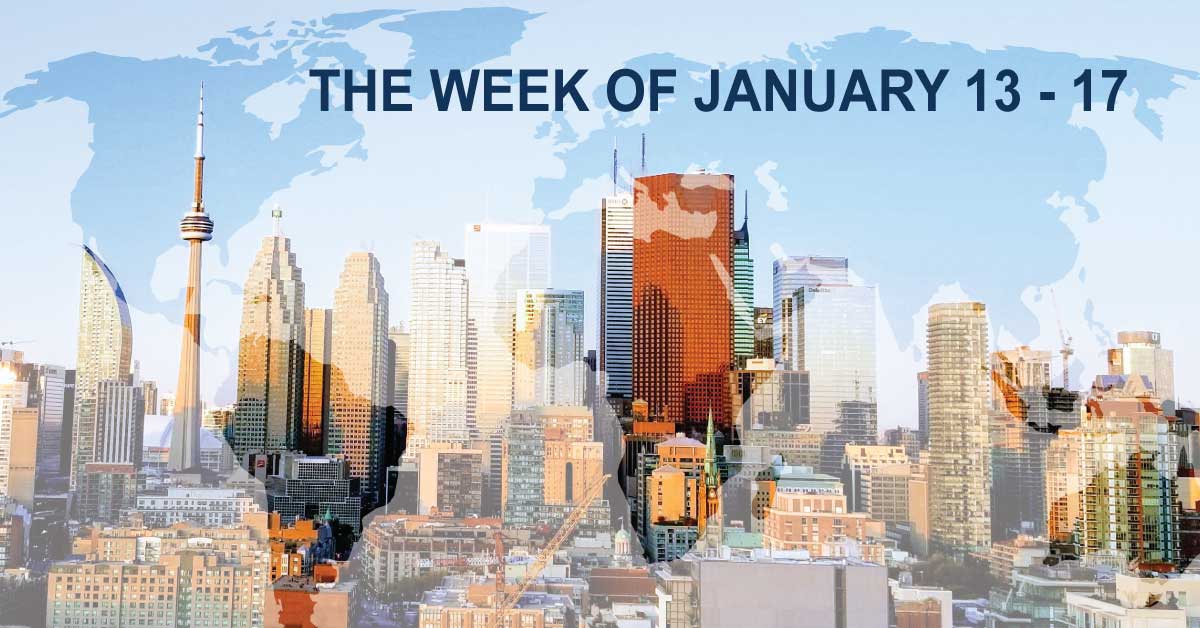
William’s Weekly Economic Recap
for the Week of January 13 – January 17, 2020 (view as PDF)
William Chin, MBA
Portfolio Manager & Chief Technical Analyst
William Chin, Chief Technical Analyst for Caldwell Investment Management Ltd. (“Caldwell”), is the lead Portfolio Manager on the Tactical Sovereign Bond Fund and Portfolio Manager for the fixed income portion of the Caldwell Balanced Fund. He also advises fixed income portfolios for affiliate Caldwell Securities Ltd.’s separately managed account platform and contributes to the Caldwell Investment Management Ltd. team’s research, specializing in macro-economics, currency risk management and technical analysis. William is a member of Caldwell’s Investment Risk Committee.
William has over 35 years of international investment experience in the areas of portfolio, currency risk and treasury management. He began his career in the currency market, progressing to the role of treasury manager for a large international bank. He was first registered as a Portfolio Manager with the Ontario Securities Commission in 1999 and managed high net worth client portfolios on a discretionary basis prior to joining Caldwell.
William has an MBA in economics and international finance. He has been a volunteer and a board member for the Canadian Society of Technical Analysts since 2001 and is their former President (2012-2014).
William is a frequent speaker on macro analysis, monetary policy and technical analysis.
Macro Update
- The Bank of Canada Business Outlook Survey indicator rose from 0.4 in the fall edition to 0.7 in this winter edition released this past Monday morning. Inside the survey, inflation expectations are tame although respondents noted some tightening in capacity. Credit conditions were little-changed. Firms reporting future investment spending plans are less widespread. The Bank of Canada leans heavily on its Business Outlook Survey in setting monetary policy. It is expected to keep its benchmark interest rate unchanged when it meets Wednesday, January 22, 2020.
- U.S. and China signed off their Phase One trade deal on Wednesday, but there are already signs that China might not be completely committed to all the terms. The U.S. will impose strong monitoring mechanisms though. Tensions went away but likely just for the time being.
- U.S. December industrial production fell 0.3%, after a 0.8% gain in November (revised down from 1.1%). Manufacturing production rose 0.2%, after a 1.0% gain in November (revised down from 1.1%).
- U.S. December Consumer Price Index (CPI) rose 0.1%; core CPI (excluding food and energy) rose also 0.1%. Inside the report, ‘real average weekly earnings’ came in flat y/y, a sharp decline from the 0.8% increase in November. ‘Real average hourly earnings’ rose only 0.6% y/y, compared to the 1.1% gain in November. The soft data are also somewhat consistent with the meagre 0.1% gain in ‘average hourly earnings’ in the December employment report.
- U.S. December retail sales rose 0.3%. Core sales – the Control Group (sales excluding autos, gas station sales and building materials) rose 0.5%; but November was revised lower from a 0.1% gain to a 0.1% decline, taking some shine of the otherwise positive report. For 2019, U.S. retail sales rose 3.6% from 2018.
- U.S. NAHB (National Association of Home Builders) housing market index eased to 75 from 76 prior. These are still strong levels.
- China Q4 GDP came in at 6.0%, lower than expected. GDP for 2019 came in at 6.1%. Q4 Industrial production grew 6.9% y/y; retail sales rose 8.0% y/y; both slightly better than expected. For December, exports rose 7.6%; imports rose 16.3%.
